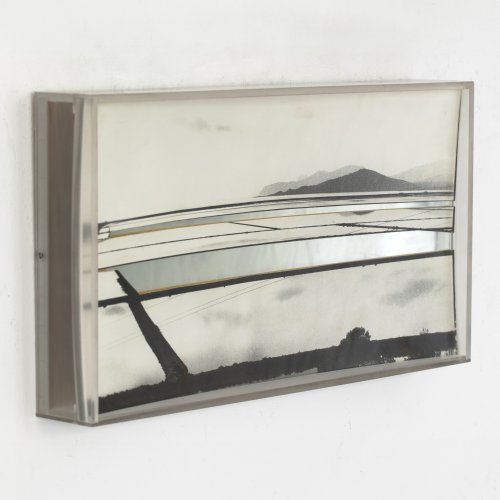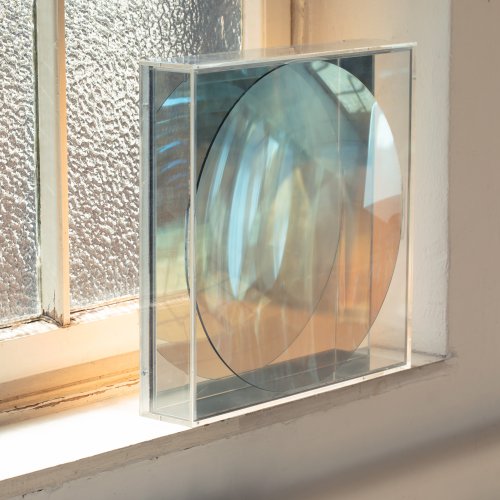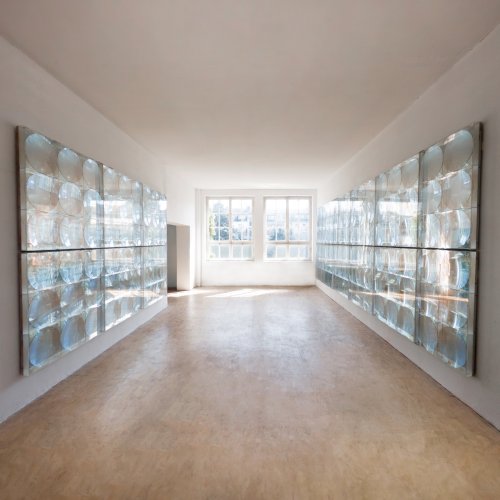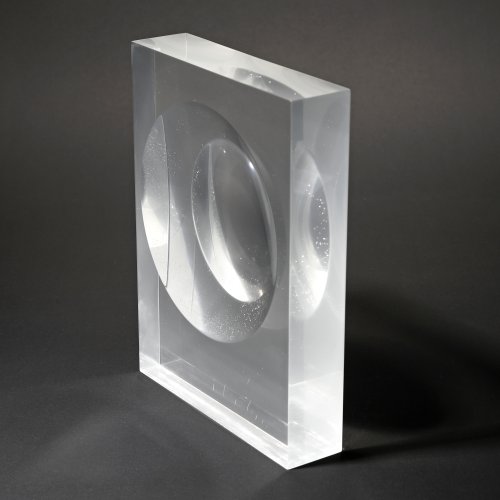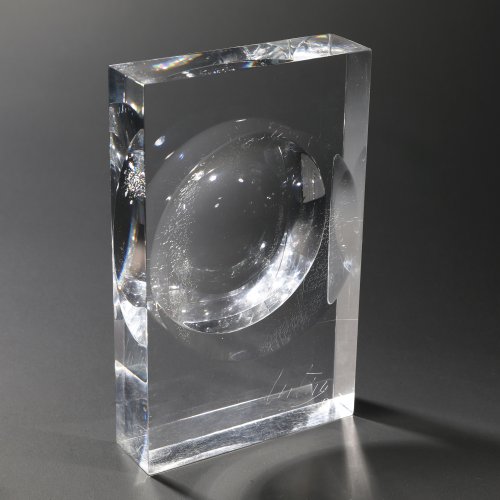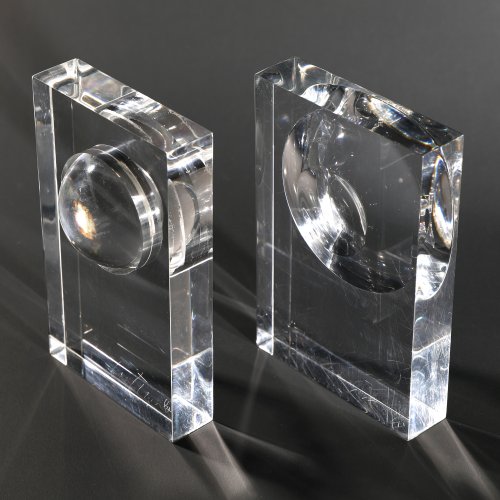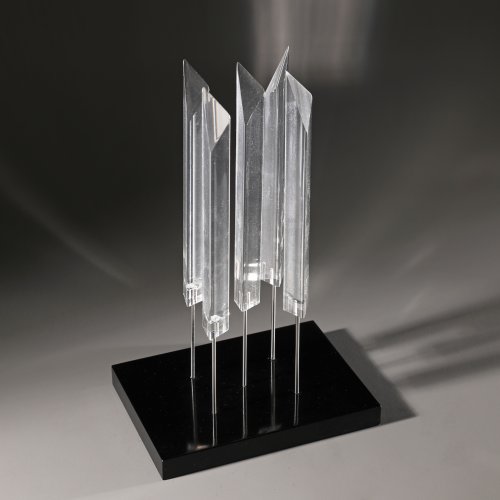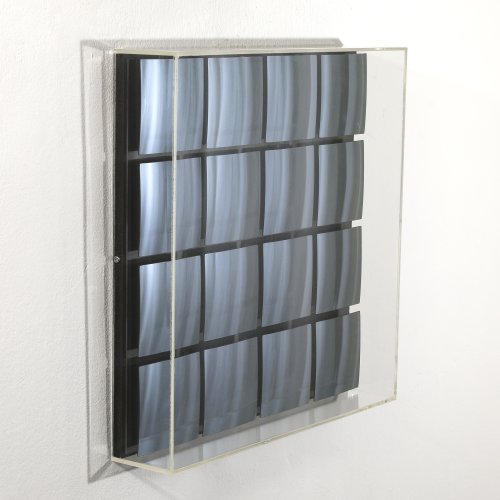Biography
“The light objects made of glass and concave mirrors, which project immaterial light phenomena into the room, are ultimately the result of image reductions and practical dematerialization processes.” This is how Dr. Magdalena Broska, scientific director of the Adolf Luther Foundation in Krefeld, describes the artist's works, which evolved in the course of his artistic development from impressionist, cubist, constructivist, abstract and monochrome material paintings to works of art that completely detached themselves from material image carriers.
Adolf Luther was born in Krefeld in 1912 and studied law at the University of Bonn after graduating from high school. After the Second World War, he passed the state examination in law and initially worked as a judge. At the end of the 1950s, however, he decided to give up his legal career in order to devote himself entirely to art. From 1957, he worked as a freelance artist and initially turned to abstract painting. A broken glass bottle, the edges of which refracted the light, led Adolf Luther to create his first light showers made of broken glass in the 1960s. He mounted the glass parts between two Plexiglas panes and hung the construction in the window to observe the incidence of light. From this point onwards, he began experimenting with glass, light and reflections, quickly attracting national attention and establishing himself as a formative artist of light and object art. In the 1970s and 1980s, Luther created a large number of mirror walls, lens objects and so-called light locks in different variations. In public spaces, Luther did not see his “integrations” as decorative art on buildings, but as a conceptual extension of architecture. His aim was the interpenetration of art and built space - an interplay in which light as immaterial energy dissolves the statics of architecture. In addition to numerous large-format works in institutional and urban spaces, he also accepted private commissions. The integration 'Spherical concave mirror wall', which will be auctioned by Quittenbaum Kunstauktionen on October 15, 2025, was produced in the early 1970s as a private commission by Luther and staged as a room divider in a private apartment in Munich-Bogenhausen. In three towering Plexiglas housings, 16 semi-transparent, round, concave concave mirrors face each other, resulting in a total of 48 concave mirrors that evoke an infinite space as an object wall. Different angles of view result in varying refractions of light, whereby the mirrors appear in different shades and the sense of space can always be experienced anew. The 'Spherical concave mirror wall' exemplifies Luther's concern: it transforms material structure into light phenomena and makes it possible to experience his endeavor to bring art and space into an atmospheric interplay - even in the context of private living space. Adolf Luther's work thus remains everlasting thanks to its lively spatial effect.
Adolf Luther died in 1990 in his hometown and left behind an extensive oeuvre that is represented in numerous collections today. He is one of the most important representatives of kinetic art and Op Art. His integration from his private apartment is being offered on the market this year for the first time in 50 years and is now on display in our Munich showroom at Theresienstrasse 60. The artwork can be viewed at any time during our opening hours.
